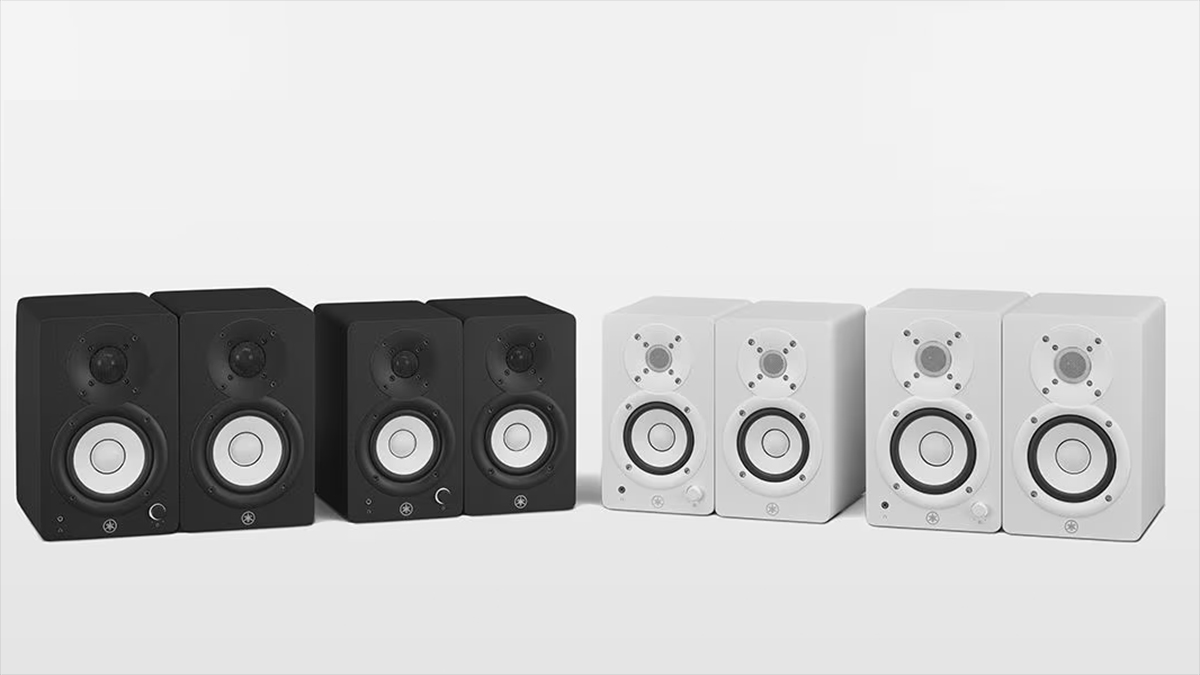Yamaha’s HS5s are reckoned to be among the best budget studio monitors you can buy, which means that the new HS4 and HS3 models have a lot to live up to (insert your own joke about HS2 being cancelled).
In monitor parlance, lower numbers usually equate to smaller sizes, and that’s the case here. In each case, you’re getting the “design philosophy and know-how” of previous Yamaha monitors but in a more compact format.
In part, the downsizing has been made possible by Yamaha’s decision to use one class-D amp for two speakers. This also reduces weight and simplifies cable connections.
And speaking of connectivity, you can plug your audio sources in via XLR/TRS phone, RCA and stereo mini jacks, which should cover off everything from your audio interface to instruments, a laptop and your mobile device. The power button, volume control and headphone jack are located on the front, which is always preferable in our book.
In terms of specs, the HS4 and HS3 are pretty similar, both being 2-way bass-reflex powered speakers. However, the HS4 has larger cone woofers and dome tweeters - 4.5-inch/1-inch as opposed to 3.5-inch/0.75-inch on the HS3 - and each speaker has a slightly different frequency response (70Hz - 22kHz (-10dB) on the HS3; 60Hz - 22kHz (-10dB) on the HS4). In both cases the power output is 26W + 26W.
Bass performance is said to be enhanced by the ‘Twisted Flare Port’ technology, which reduces air turbulence, and you can tweak the sound to suit your studio with the Room Control and High Trim switches.
The HS3 and HS4 are both available in either black or white, so you can go for a speaker with that classic NS10 look or opt for a paler finish. You can pick them up for around £229/$250 and $285/£329 respectively, by the looks of it.
Find out more on the Yamaha website.








